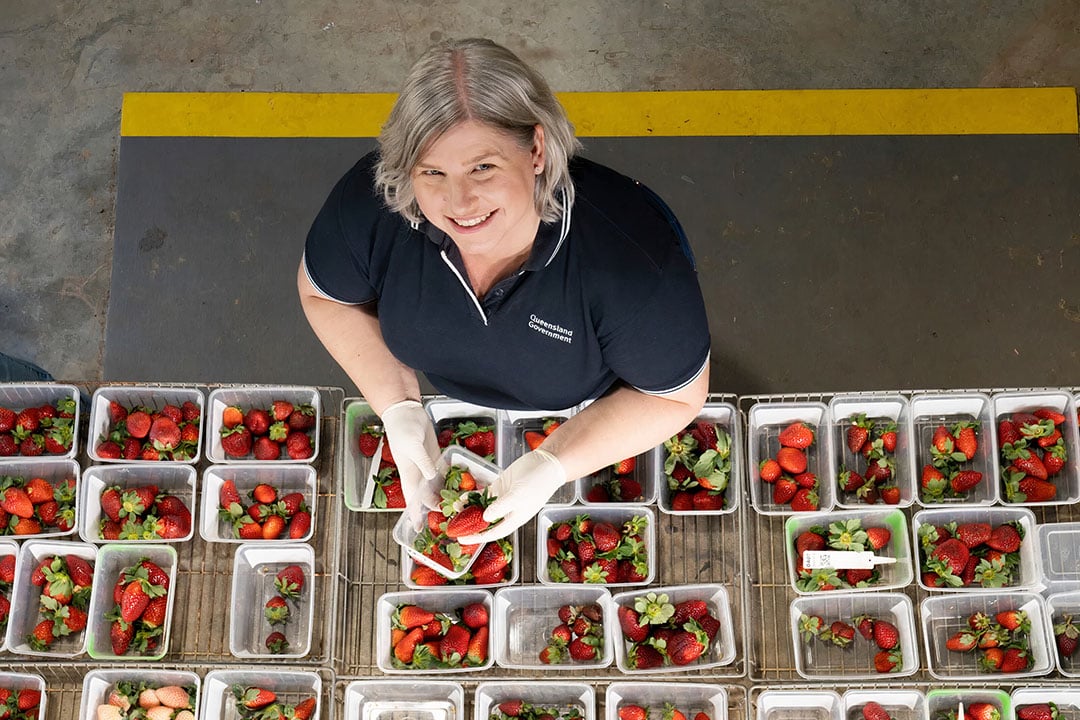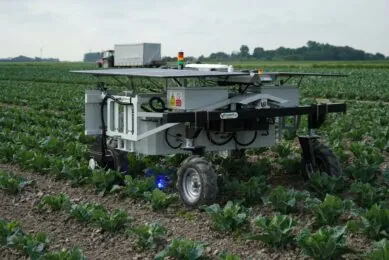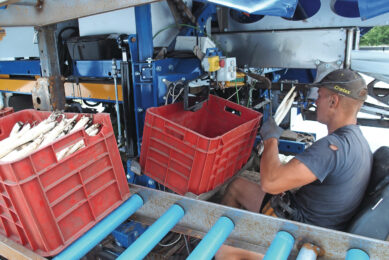Australian effort to deliver robot-ready strawberries

Australian scientists are developing strawberries that can be easily harvested by robots. “Automation will be common practice yet in Australia before we know it”, says principal plant breeder Dr Jodi Neal of the Department of Agriculture and Fisheries (DAFQ) in Queensland.
An AUS $11.5M (US $7.7M), four-year program is being delivered through Hort Innovation and led by DAFQ. According to Dr Neal, the program will reduce the time needed to pick and pack strawberries, resulting in a more profitable outcome for growers.
Scientists will naturally meld together the flavour, colour and aroma traits Australians love the most, with premium strawberry varieties from the world that feature single stemmed fruit ideal for robotic picking. “They will be naturally bred, using traditional breeding techniques.”, Dr Neal says. “We are not using any genetic modification of any kind.”
We are not using any genetic modification of any kind
“It takes the same amount of time to pick a small strawberry as it does to pick a large one”, Dr Neal points out. “This breeding program is focusing on delivering a consistent fruit size that is preferred by consumers on unbranched flower stems – meaning that the fruit can be picked faster.”
Hort Innovation chief executive Brett Fifield says recent data shows the horticulture workforce has decreased by 20 per cent over the past three years, which has already resulted in Australian growers adopting advanced machinery.
Text continues below picture

Robot-picking is going to happen
“We are always looking forward”, Dr Neal emphasises. “What are growers going to need in the coming years? Robot-picking is one of those things. It is going to happen, and it has already started. Getting labour is already a big issue. Robots are reliable and can go 24 hours a day. So, we need to have varieties that are suitable for that style of production for when growers start adopting it in larger numbers.”
“The development of a sweet, rich red and aromatic strawberry that is ideal for automation will prove a game changer for growers who want to apply new technologies on-farm. While harvesting strawberries using automation is not common practice yet in Australia, it will be before we know it.”
It means you have the plants out of the ground, away from the diseases
Dr Neal explains that most of the work on strawberries for robot-picking will be done for use in table top and gutter systems, with hydroponic grow bags. “This style of production is becoming more popular worldwide. Basically, it means you have the plants out of the ground, away from the diseases that can cause an issue. And all the maintenance and picking can be done at waist height. A lot of the robots are being developed or this kind of situation.”
In Queensland, most of these systems are out in the open in a field, without a cover. In the southern states of Australia, a lot of strawberries in these systems are grown under polytunnels. “We are breeding for both”, Dr Neals says.
A better price
The scientists in the program have been talking internationally with strawberry-growers who have been using picking-robots, Dr Neal says. “And we have been finding out what fruit architecture and plants work best for the robots. We are breeding for that architecture. At the moment, most of the robotics is happening overseas. There are robots being used in Tasmania, and we talk to this grower quite frequently to see whether we are on the right track.”
Our target audience is Australian strawberry growers
Dr Neal says that the program is future-proofing the strawberry varieties for robots, improving production, and is providing a beneficial outcome for robotic systems and hand-picked systems. “The cost of the architecture will be lower. And by having more consistent larger strawberries, farmers get paid a better price for their product and the strawberries will be faster to pick and pack.”
Aiming at Australian growers
The program is primarily aiming at Australian growers. “We do send our varieties overseas”, Dr Neal says. “If they happen to be suitable for some of the climates there, that use robots, that is fantastic. But our target audience is Australian strawberry growers. We will be sending the varieties to the farms in Australia that have robots at that time, as they become available.”
The Australian national strawberry industry had an estimated farm gate value of AUS $417 million (US $278 million) in 2021-2022. Varieties developed by the Australian Strawberry Breeding Program currently capture 45 per cent of the national market and 90 per cent of the subtropical industry.
Join 17,000+ subscribers
Subscribe to our newsletter to stay updated about all the need-to-know content in the agricultural sector, two times a week.



